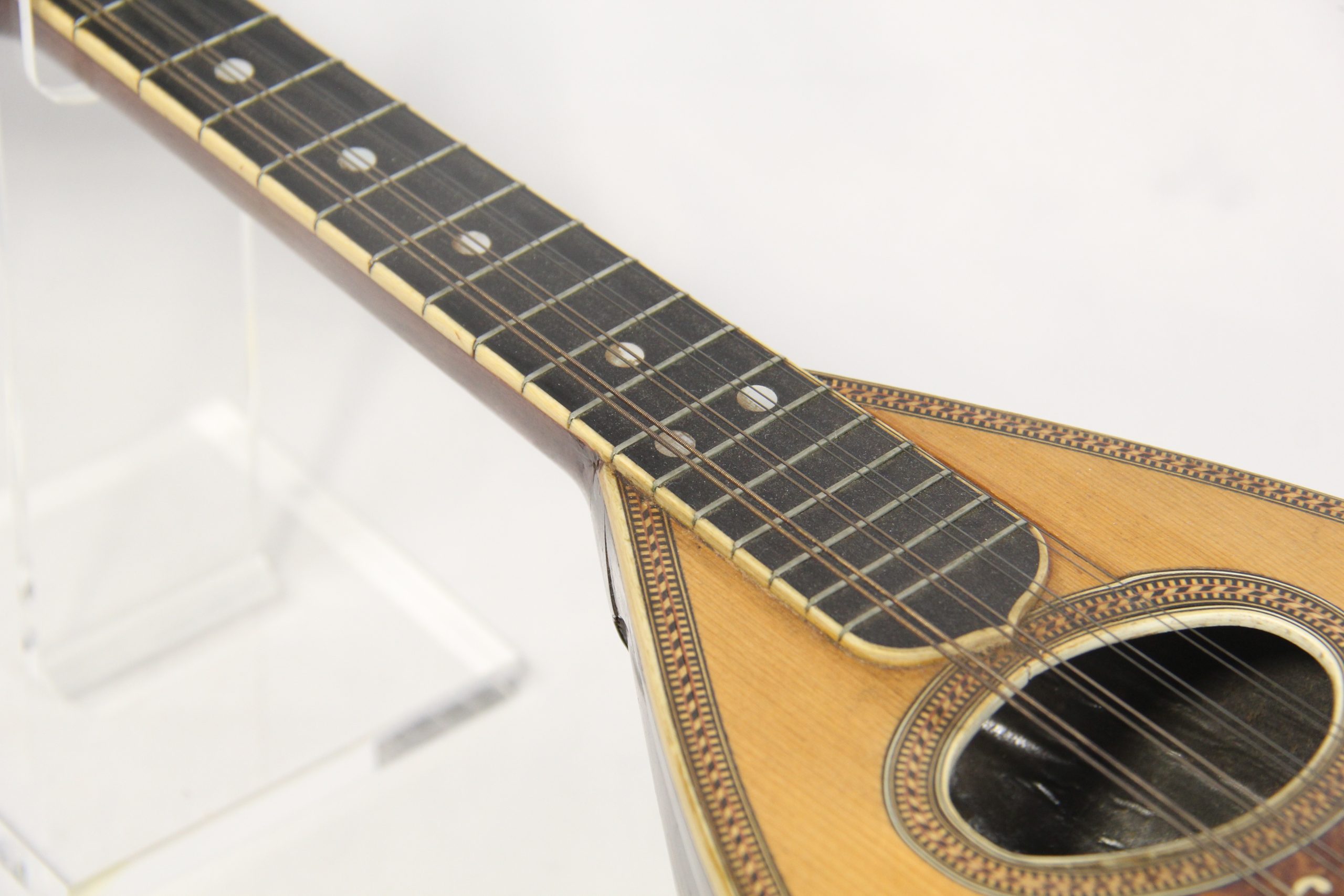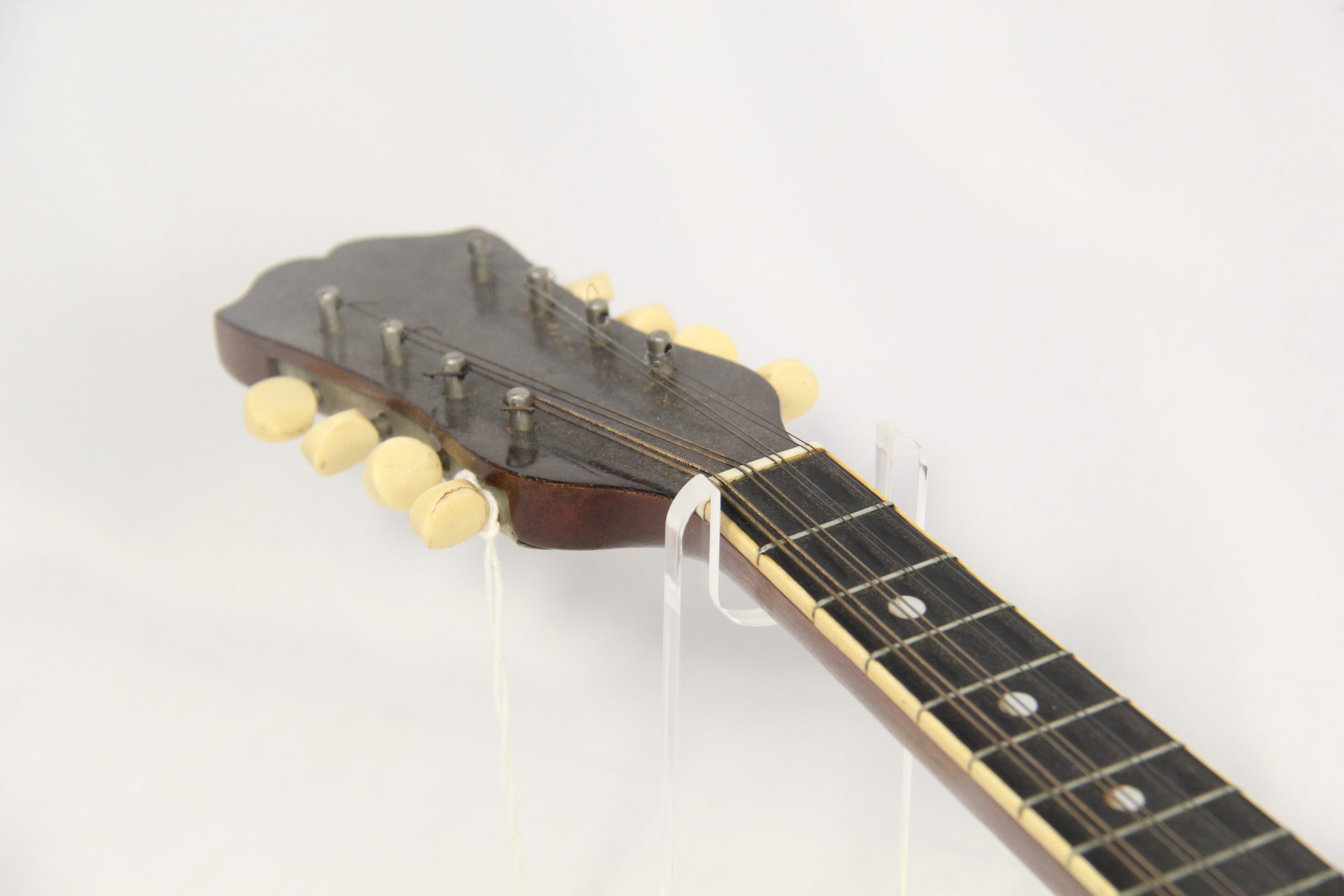Mandolin
Details
- Origin: Boston, MA, USA
- Date Made: 1900
- Maker: A.C. Fairbanks & Co.
- Collection: DUMIC 24
Description
Eight metal strings, wood body and fretboard with tuning pegs at the top, bone nut, metal nameplate on the back reading “The A.C. Fairbanks Co./Makers/Boston, Mass,” “90” printed on the back of neck, “Regent” sticker inside, bowlback hollow soundbox.
Originally purchased in 1953 from an antique store in Haverhill, Mass. The antique store owner claimed to have acquired the instrument when he bought the estate of William Dole, a supposed nephew of John Greenleaf Whittier. Given to Duke (originally given to Perkins Library) on November 13, 1978.
A.C. Fairbanks & Co. began making mandolins in the year 1900, and this one was the 90th model they produced during the first year of production, as evidenced by the “90” printed on the back of the neck.
“1900 Boston was home to a unique co-mixture of musical genres, primarily German Romanticism, Irish and African-American folk songs, and traditional American dance tunes. Bostonians were not merely representing musical trends popular in the broader American context, they were also cultivating their own unique style. Composers like Amy Beach and Edward MacDowell combined the above genres in singular works. Music originally performed in homes in the 1890s suddenly spilled onto the streets and into dance halls, and vice-versa. The mandolin thus became sonically and symbolically enwrapped in every aspect of Boston’s musical landscape at the turn of the century.”
The mandolin became popular for parlor music in private residences, with composers writing “soft and desirable music” for the instrument, and thus began to be associated with urban high society. “In 1890s Boston, shop-girls started to carry mandolin cases in public, to give the impression that they were really Society ladies.”
It has importance to middle class culture at this time in Boston too. Boston became home to many Irish immigrants as a result of the famine in the 1840s, and the mandolin was a popular among celtic bands at music and dance halls such as the Intercolonial Club.
The antique store owner claimed this mandolin was owned by John Greenleaf Whittier, an American Quaker poet and advocate for the abolition of slavery in the United States. This, however, is unconfirmed and quite doubtful as evidenced in the mail correspondence between Perkins Library curators and administrators at the Whittier estate.
“While original ownership cannot be traced with any certainty, it is entirely possible to imagine what music would have been played by mandolin owners in Boston, ca. 1890–1910. Despite its being created by an instrument maker who originally specialized in banjos, an instrument that is more directly linked to folk tune performance in nineteenth-century America, this mandolin was a symbol in high society and a versatile instrument to be used in parlors as often as dance halls. It pervaded numerous aspects of musical life in Boston and inspired prominent American composers to write around its own diverse history. To contextualize this instrument is to appreciate its presence in 1900 Boston, in a time before it became synonymous with the blue grass and jazz genres, ca. 1920–50.”
Sources
Quoted passages and general information sourced from Nicholas Smolenski’s 2020 DUMIC blog post:
- Smolenski, Nicholas. “Mandolin Culture in Boston, Ca. 1900.” Duke University Musical Instrument Collections, October 8, 2020. https://sites.duke.edu/dumic/2020/10/08/mandolin-playing-in-boston-ca-1900/.







